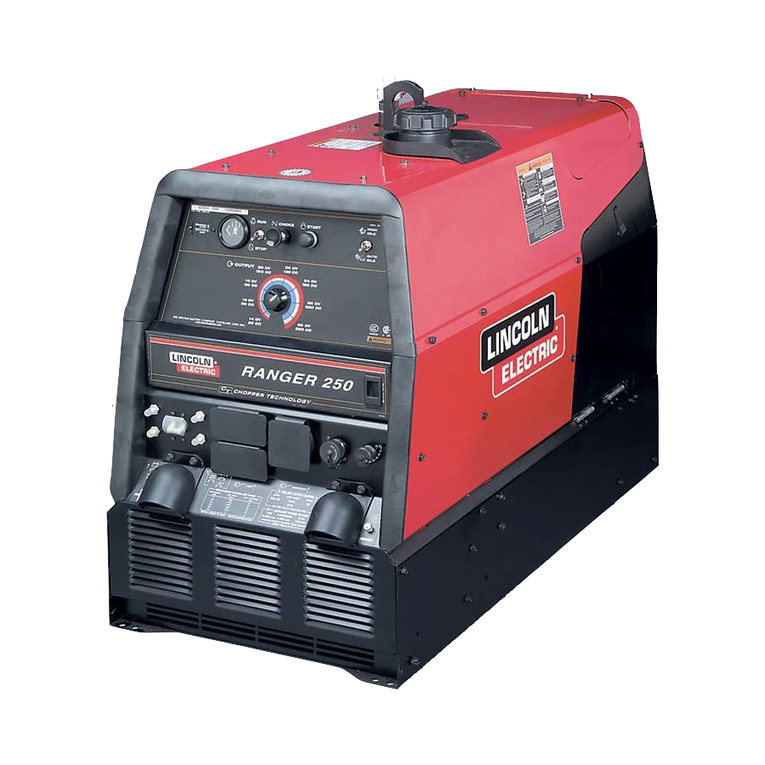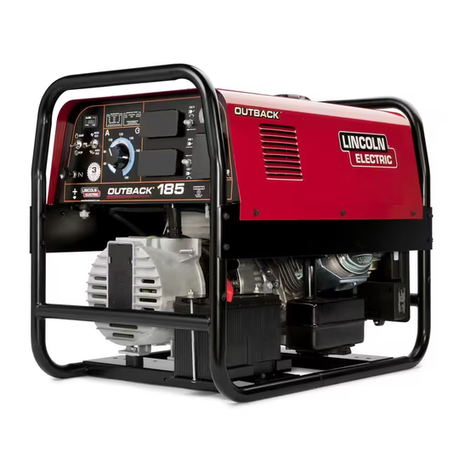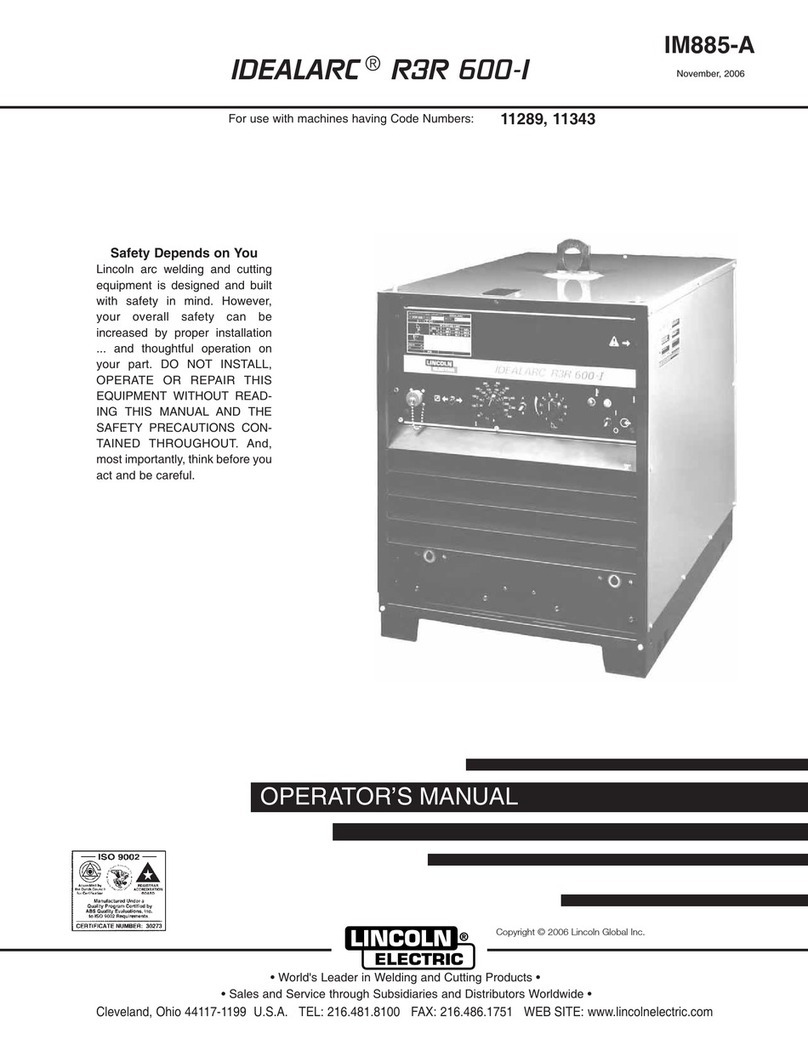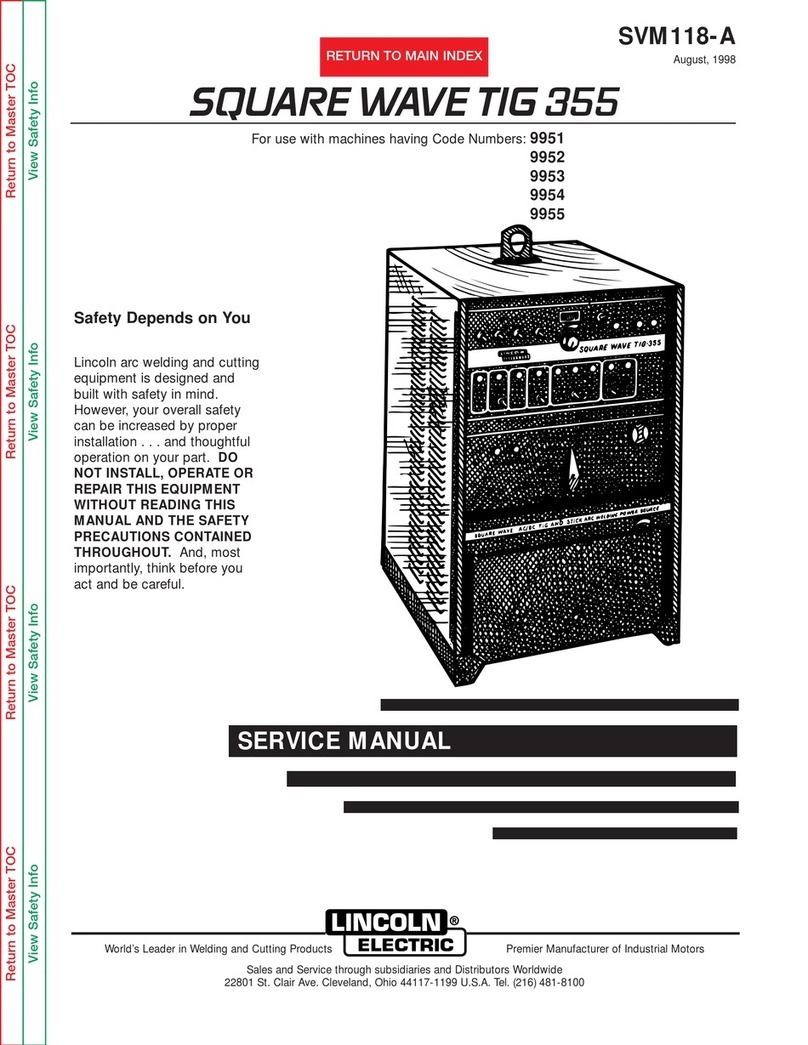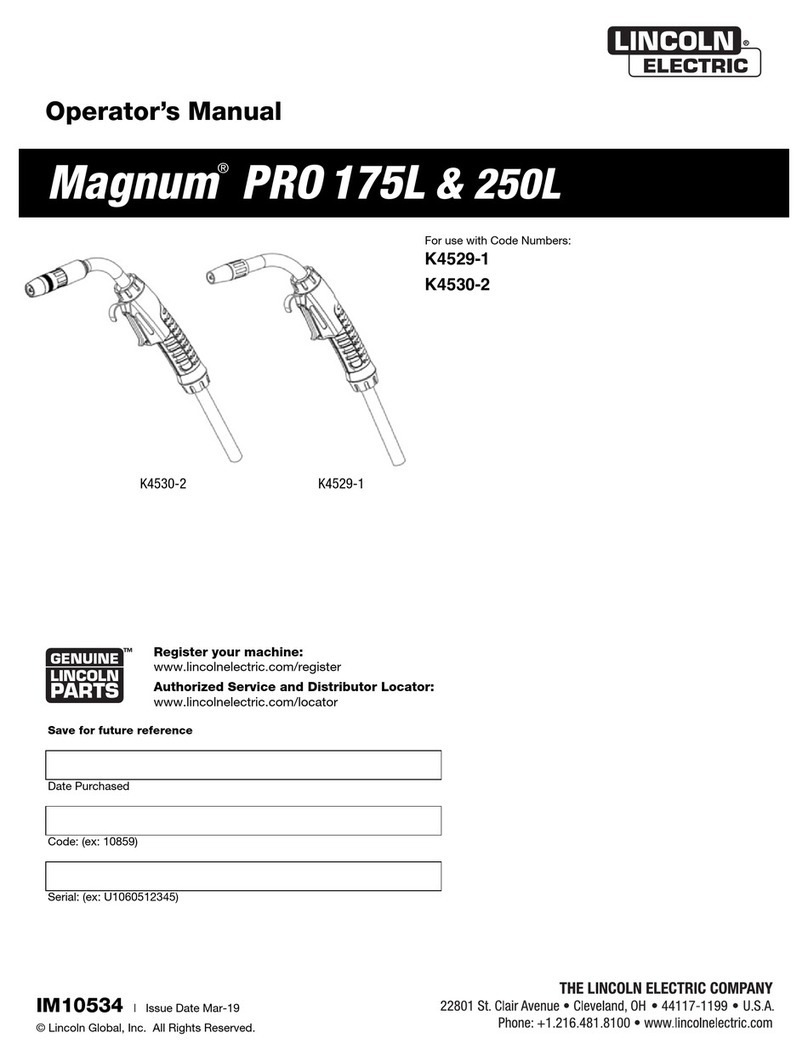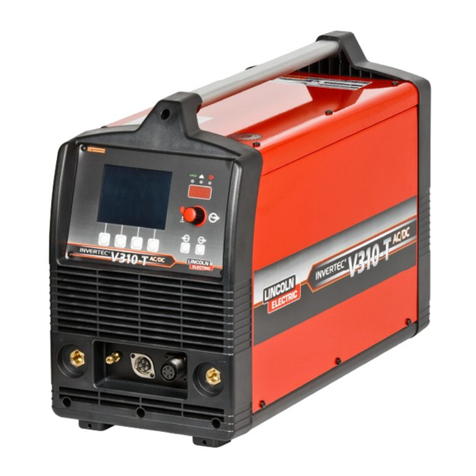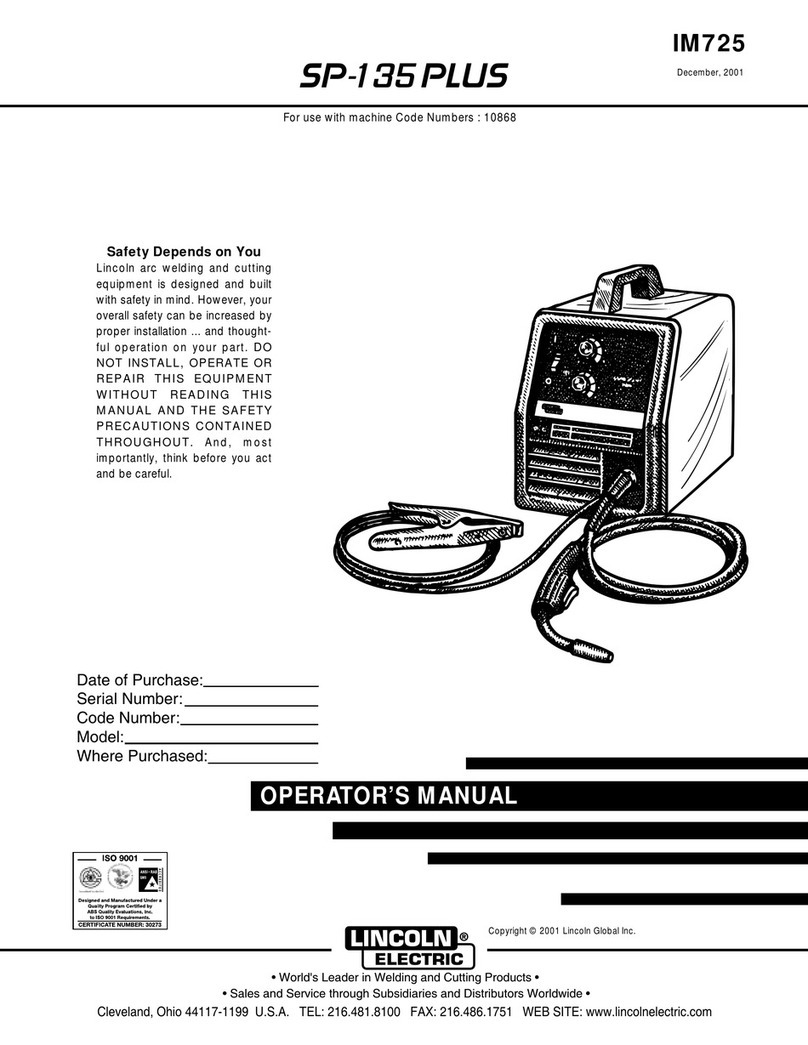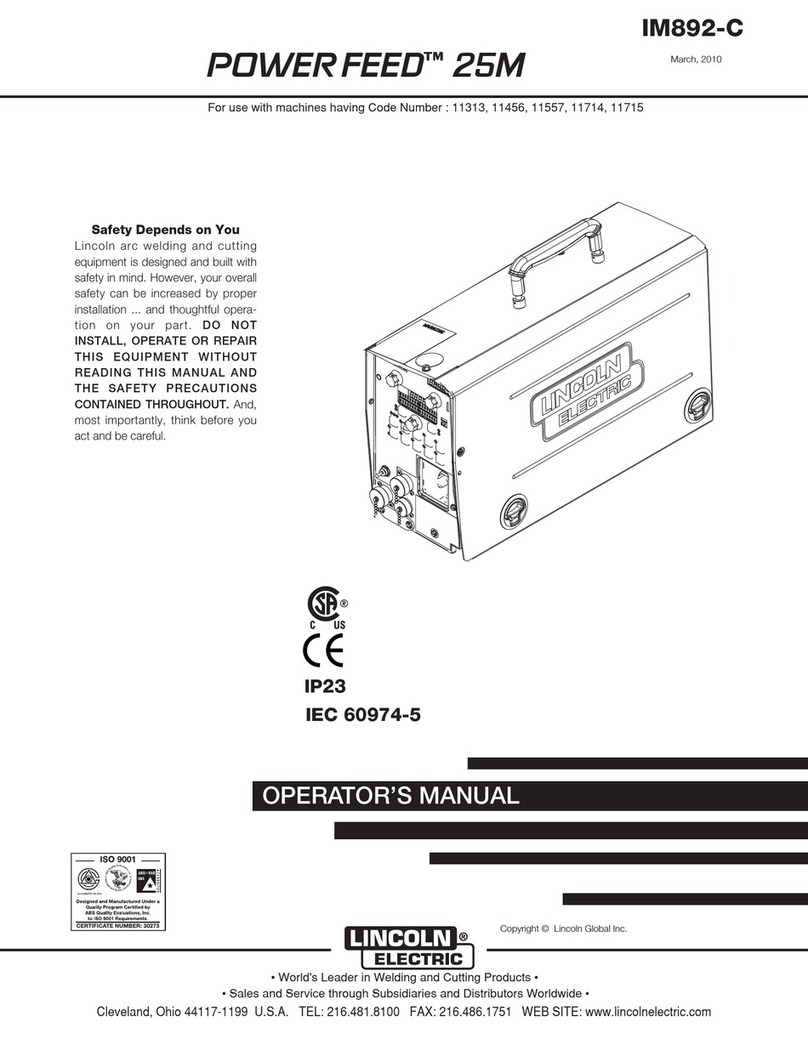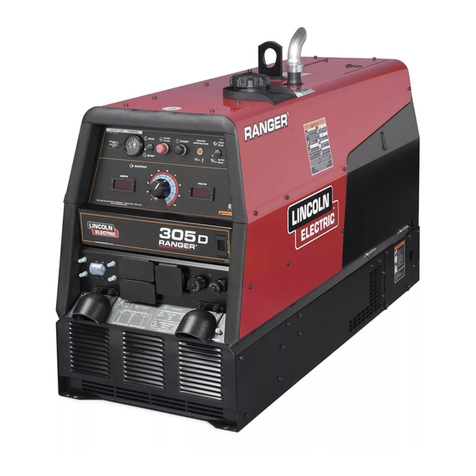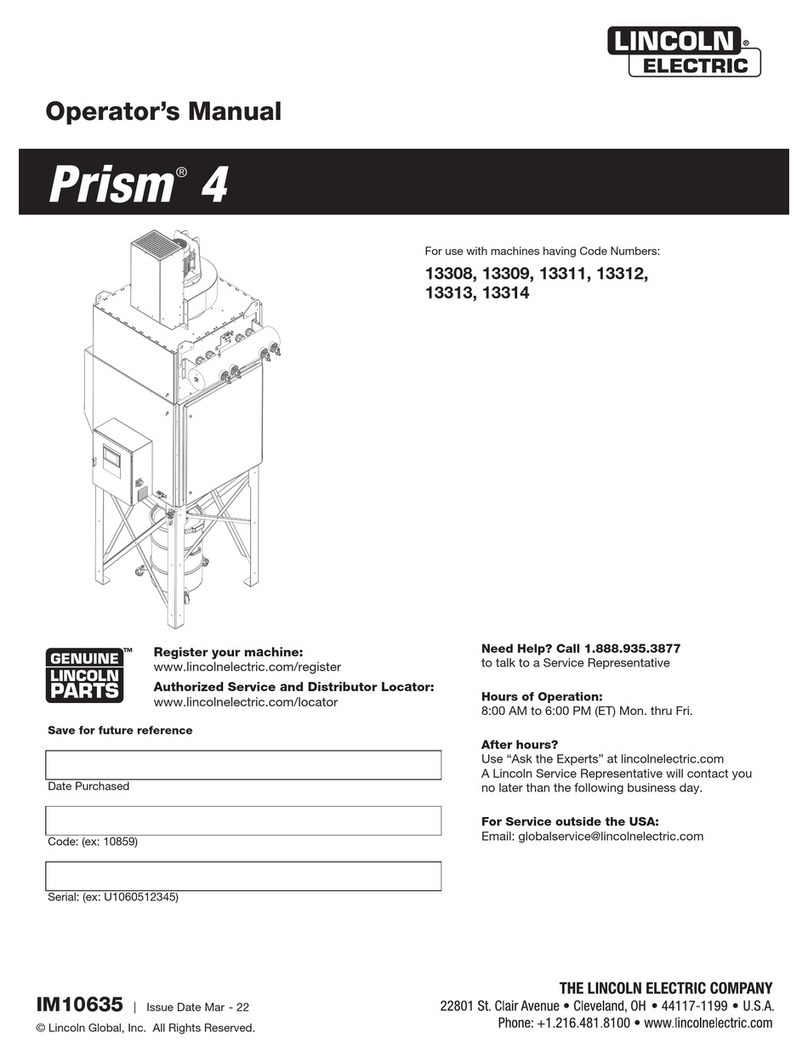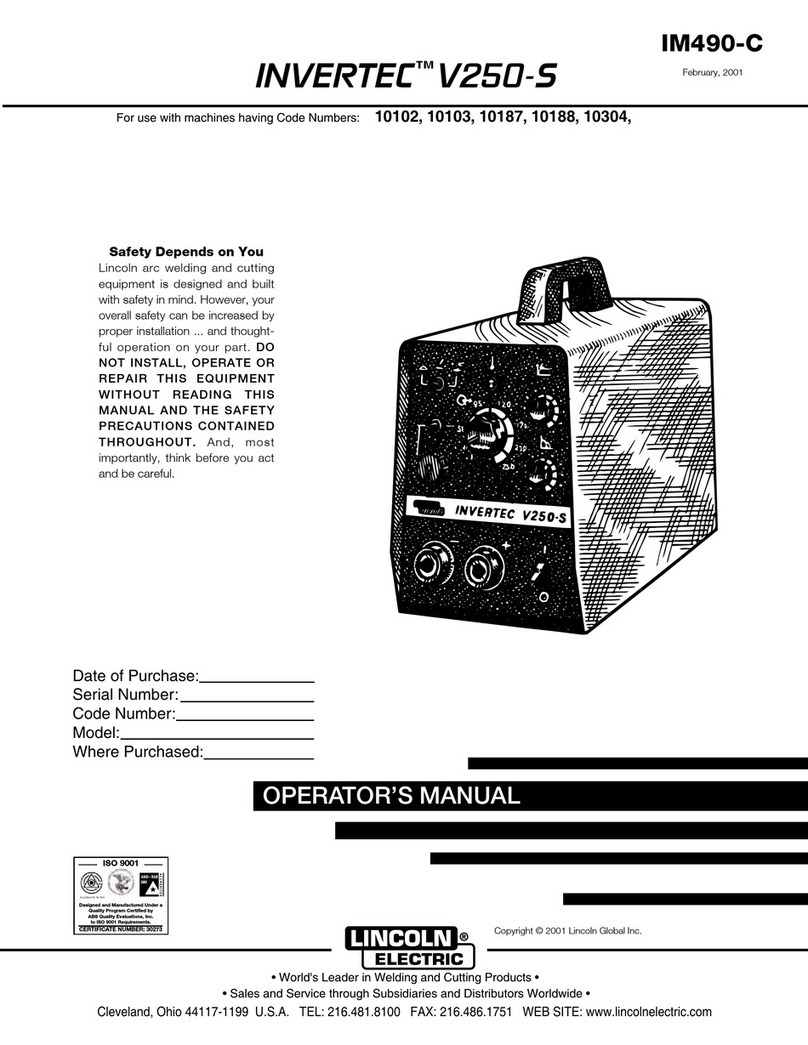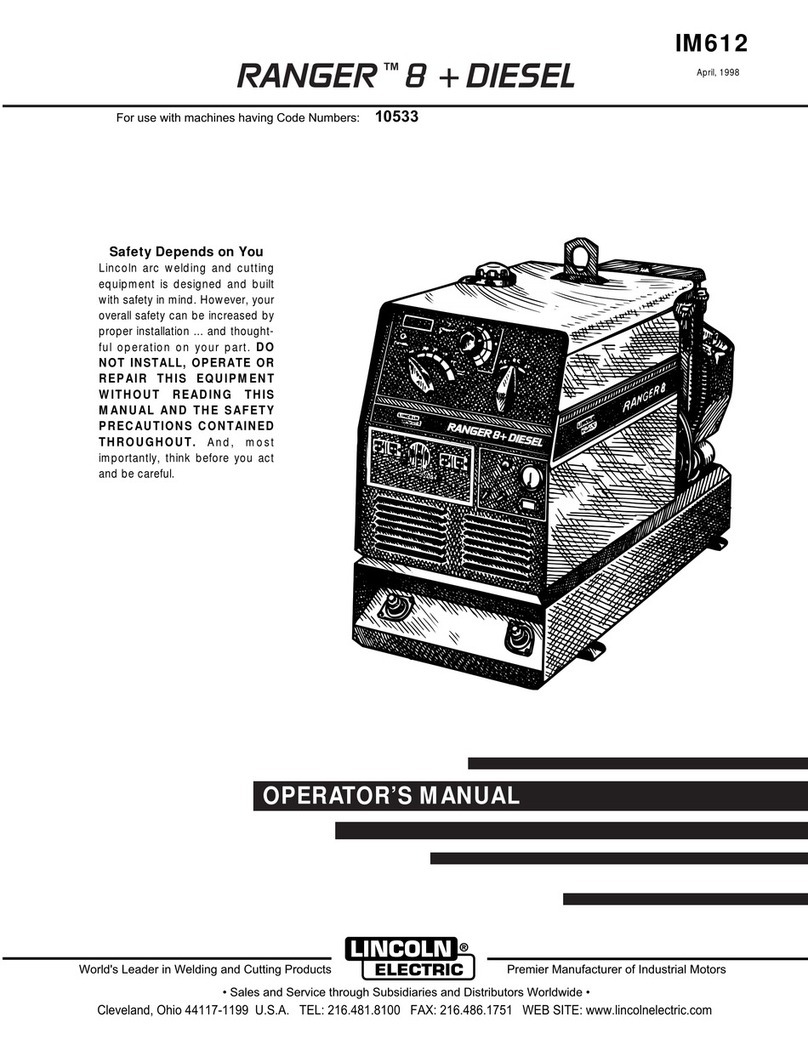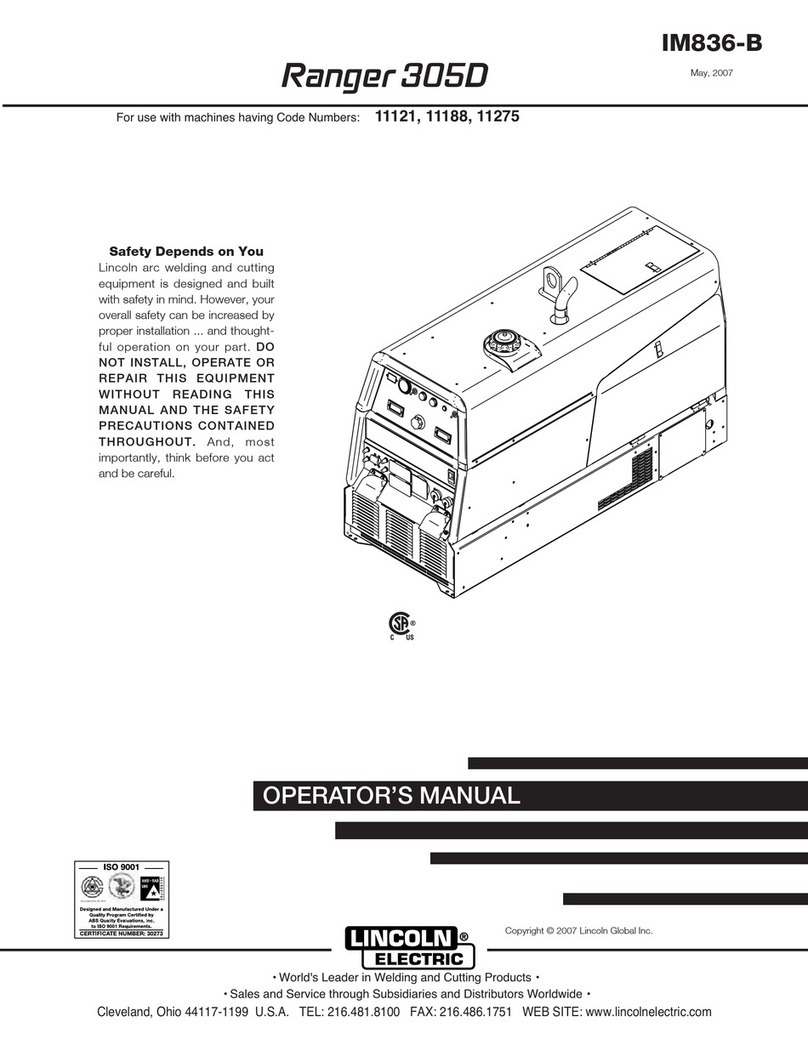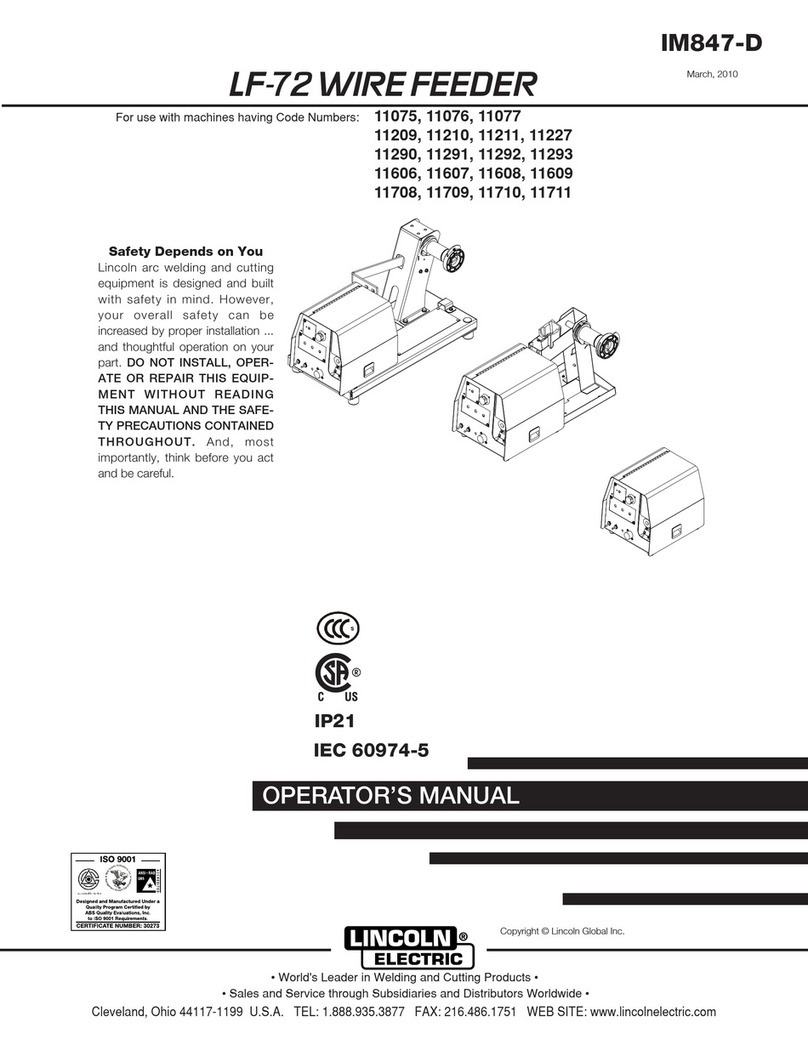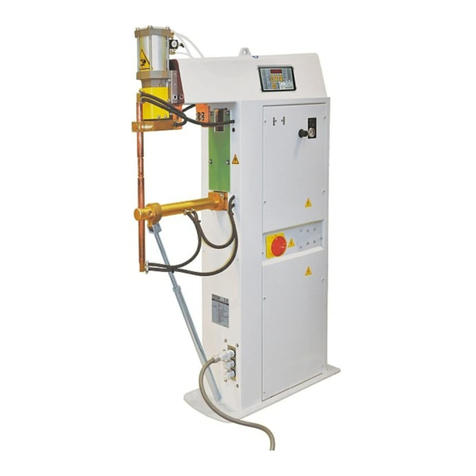
English English
5
Machine Grounding and High
Frequency Interference Protection
The host power source must be earth grounded! See
your local and national electrical codes for proper
grounding methods.
The Advanced Module utilizes a high frequency impulse
to initiate the arc of selected GTAW (TIG) welding
procedures. Although the power of this impulse is
significantly less than traditional arc stabilization circuits,
it is best to locate the power source and Advanced
Module away from radio controlled machinery as it may
adversely affect the operation of the RF controlled
equipment, which may result in bodily injury or damage
to the equipment.
The high frequency starting impulse may also cause
radio, TV and electronic equipment interference
problems. These problems may be the result of radiated
interference. Proper grounding methods can reduce or
eliminate radiated inter- ference.
Radiated interference can develop in the following four
ways:
1. Direct interference radiated from the welder.
2. Direct interference radiated from the welding leads.
3. Direct interference radiated from feedback into the
power lines.
4. Interference from re-radiation of “pickup” by
ungrounded metallic objects.
Keeping these contributing factors in mind, installing
equipment per the following instructions should minimize
problems.
1. Keep the welder power supply lines as short as
possible and enclose as much of them as possible
in rigid metallic conduit or equivalent shielding for a
distance of 50 feet (15.2m). There should be good
electrical contact between this conduit and the
welder case ground. Both ends of the conduit
should be connected to a driven ground and the
entire length should be continuous.
2. Keep the work and electrode leads as short as
possible and as close together as possible. Lengths
should not exceed 7.6m. Tape the leads together
when practical.
3. Be sure the torch and work cable rubber coverings
are free of cuts and cracks that allow high frequency
leakage.
4. Keep the torch in good repair and all connections
tight to reduce high frequency leakage.
5. The work piece must be connected to an earth
ground close to the work clamp, using one of the
following methods:
A metal underground water pipe in direct
contact with the earth for ten feet or more.
A 19mm galvanized pipe or a 16mm solid gal-
vanized iron, steel or copper rod driven at least
eight feet into the ground.
The ground should be securely made and the grounding
cable should be as short as possible using cable of the
same size as the work cable, or larger. Grounding to the
building frame elec trical conduit or along pipe system
can result in re-radiation, effectively making these
members radiating antennas.
6. Keep cover and all screws securely in place.
7. Electrical conductors within 15.2m of the welder
should be enclosed in grounded rigid metallic
conduit or equivalent shielding, wherever possible.
Flexible metallic conduit is generally not suitable.
8. When the welder is enclosed in a metal building, the
metal building should be connected to several good
earth driven electrical grounds around the periphery
of the building.
Failure to observe these recommended installation
procedures can cause radio or TV and electronic
equipment interference problems and result in
unsatisfactory welding performance resulting from lost
high frequency power.
Stacking
Stacking of the Power Wave®Advanced Module shall
not exceed a power source above and one module
below.
Duty Cycle
The Advanced Module is rated at 300 amps at a 100%
duty cycle. It is further rated to support 350 amps at 40%
duty cycle. The duty cycle is based on 10 minute period.
A 40% duty cycle represents 4 minutes of welding and 6
minutes of idling in a ten-minute period.
Note: the Advanced Module is capable of withstanding a
peak output current of 600 amps. The allowable
maximum average output current is time dependant, and
ultimately limited by the host power source.
Example: 40% Duty Cycle:
Welding for 4 minutes. Break for 6 minutes.
Minutes or decrease
Duty Cycle
Control Cable Connections
General guidelines
Genuine Lincoln control cables should be used at all
times (except where noted otherwise). Lincoln cables
are specifically designed for the communication and
power needs of the Power Wave®systems. Most are
designed to be connected end to end for ease of
extension. Generally, it is recommended that the total
length not exceed 30.5 m. The use of non-standard
cables, especially in lengths greater than 25 feet, can
lead to communication problems (system shutdowns),
poor motor acceleration (poor arc starting), and low wire
driving force (wire feeding problems). Always use the
shortest length of control cable possible, and DO NOT
coil excess cable.
WARNING
Regarding cable placement, best results will be obtained
when control cables are routed separate from the weld
cables. This minimizes the possibility of interference
